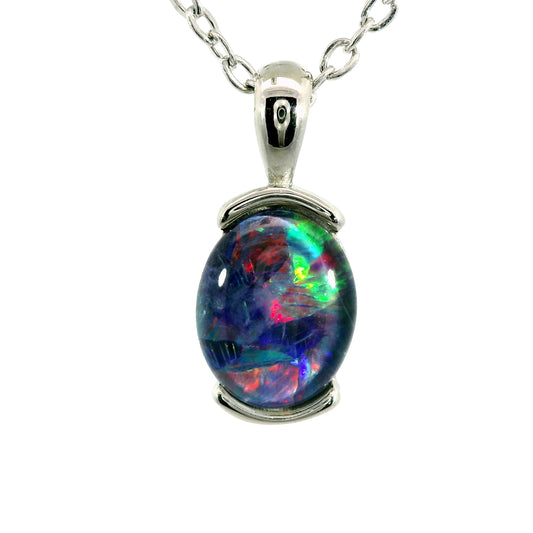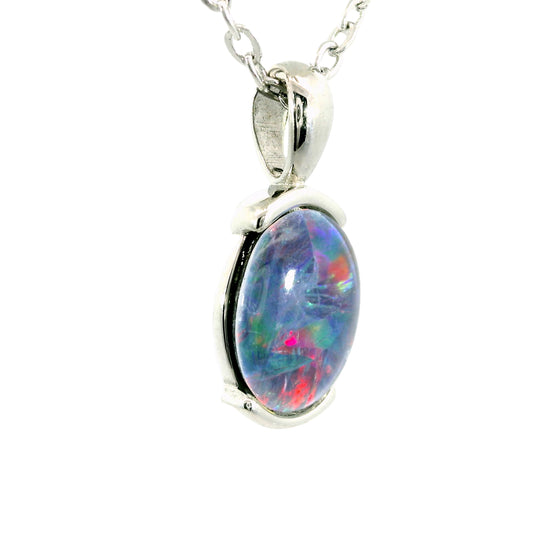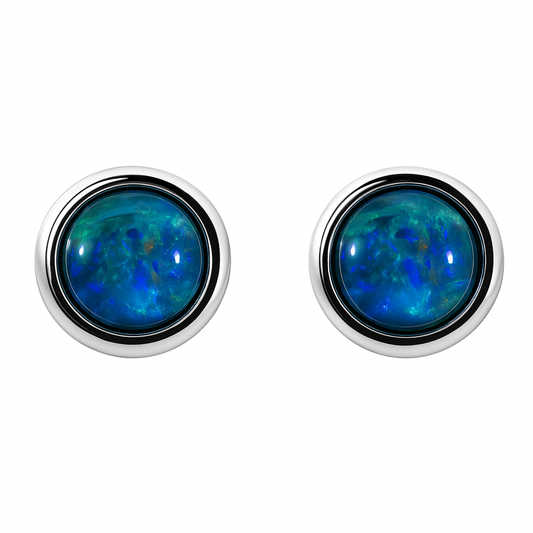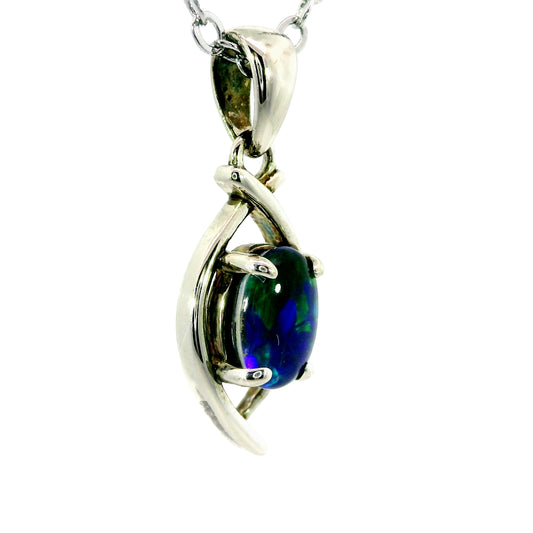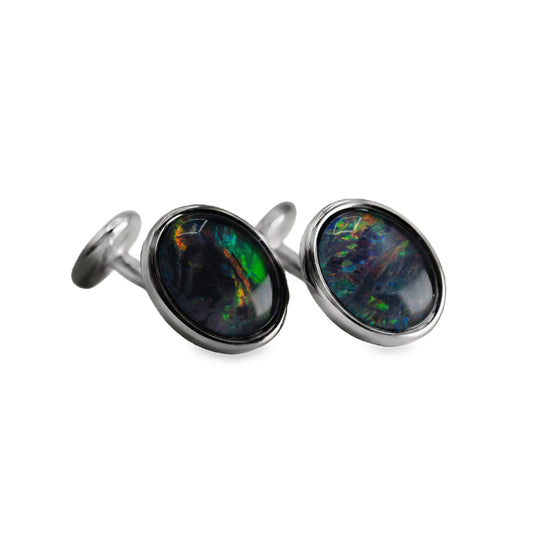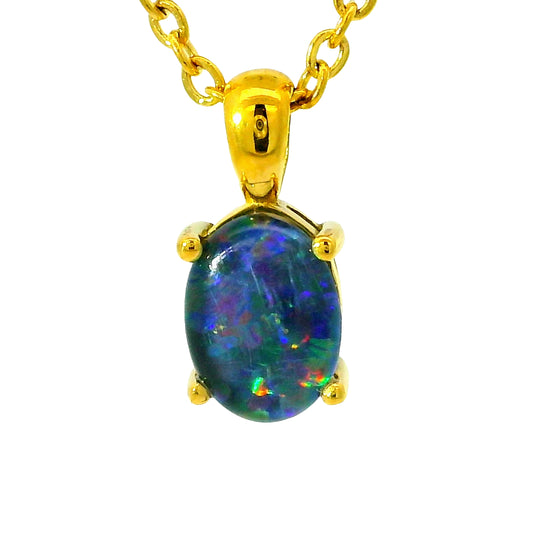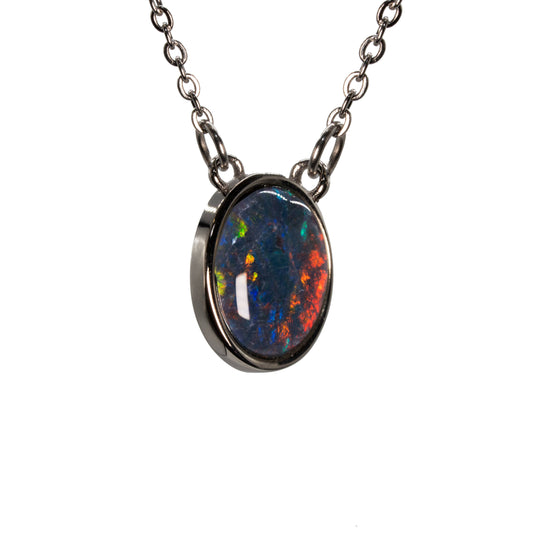Famous Opals in History
Some famous opals have histories just as fascinating as their appearance. Learn the unique stories behind sixteen of the largest and most beautiful opals in the world.
------------------------------------------------------------------------------------------------------------
THE “AURORA AUSTRALIS”

The “Aurora Australis” was found in 1938 at Lightning Ridge and is considered the world’s most valuable black opal. It was dug by Opal miner Charlie Dunstan. The stone displays a harlequin pattern with dominant red, green and blue colours against a black background. It weighs 180 cts. and is 3 inches by 1.8 inches. The rarity of the opal comes from its size and strong, vibrant colour play. It weighs 180 carats and its dimensions are 3 inches x 1.8 inches. Altmann + Cherny purchased the Opal in a semi-rough state, and they cut and polished it into its brilliant oval shape. It was valued at AUD$1,000,000 in 2005.
“FIRE QUEEN”
In November 1906, "Fire Queen" was found by Charlie Dunstan at the Angledool Diggings, Lightning Ridge. It weighed in at about 6.5 oz. or nearly 900 carats, however, this stone was sold for a paltry £100 to an unknown buyer after Dunstan. It changed hands several times, each new buyer finding it difficult to sell as there was hardly any market for big black opals in those days. Nevertheless, it was in the Chicago Museum, valued at £40,000 after being renamed “The Fire Queen”. In the 1940's, J.D. Rockefeller bought “The Fire Queen” for £75,000 and added it to his prestigious family gem collection.
“THE OLYMPIC AUSTRALIS”
The “Olympic Australis” is recorded to be the largest and most valuable gem opal ever found. It was found in 1956 at the famous “Eight Mile” opal field in Coober Pedy, South Australia. It was named in honor of the Olympic Games, which were being held in Melbourne at the time. In 1956 John Altmann and Rudi Cherny purchased a bag of rough Opal, amongst all the uncut stones was one huge Opal. This Opal was so unique that it was 99% gem Opal, thus, John and Rudi decided not to cut the Opal but to keep it whole. It weighs 17,000 carats (3450 grams) and is 11 inches long (280 mm), with a height of 4¾ inches (120 mm) and a width of 4½ inches (115 mm). It was valued at AUD$2,500,000 in 2005. Considering the purity of the opal, it was estimated that if it were to be cut it would make 10,000 1 carat stones at a wholesale value of US$180 per stone.
The “BUTTERFLY STONE” or “RED ADMIRAL”

The Red Admiral’ or ‘Butterfly Stone’ was discovered during World War I on the ‘Phone Line’ field. Reported to be 51 carats, the stone is of extraordinary beauty, with a predominant red pattern equally visible from all angles. It wasn’t until 1920 that the stone was given the name “Butterfly” because of its resemblance to the British butterfly, the Red Admiral. It passed through several hands, including Percy Marks and a Queensland grazier, before being purchased by the late Mrs Drysdale of Sydney. As of 2004, it was back in the care of Percy Marks & Co.
“HALLEY'S COMET”

“Halley’s Comet”, is recorded in the Guinness Book of Records as the world’s largest uncut black opal nobby. It weighs 1982.5 carats and measures 100 x 66 x 63 mm, or 4 x 2-5/8 x 2-1/2 in, with a thick gem quality green and green/orange colour bar. The massive stone was found by a group of opal miners on the Leaning Tree Claim at Lightning Ridge known as “The Lunatic Hill Syndicate” about the time “Halleys Comet” appeared in Australian skies. “Halley's Comet” was for sale in 2005 for AUD$1.2 million.
The Virgin Rainbow

Considered to be one of the world's most beautiful opals, "The Virgin Rainbow" is a 63.3mm Black Crystal Opal Belemnite Fossil in a 'pipe' shape. It Features gem quality colour, and is also said to glow in the dark. The Virgin Rainbow weighs in at 72.65 carats, and was discovered at Three Mile Fields, Coober Pedy, South Australia, September 2003 John Dunstan.
“Pride of Australia” OR “Red Emperor”

“Pride of Australia”, also known as “Red Emperor”, was found in 1915 by Tom Urwin and Snowy Brown at Phone Line, Lightning Ridge. The opal is shaped like the continent. It has black and blue veins interlaced with brilliant red streaks. By 1954, it had toured at least five World Fairs as “the greatest opal of Australia, and therefore the greatest opal in the world.”
This double-sided gem cut to a 225 carat stone that just fit into a tobacco tin. There were two distinct colour bars. The one on the back was much lighter and almost harlequin, totally different to the main bar of dark, rich flashes of colour. Ernie Sherman bought ‘Pride’ plus another three stones from the miners for £2000 around 1920. It was the highest price ever paid for four black opals. The ‘Pride of Australia’ was valued in 1931 at £2000 on its own and was sold in the 1950s from the Percy Marks Collection, Sydney.
The “Flame Queen”

The story of mining of the “flame Queen” likes novel. The ‘Flame Queen’ was mined on Bald Hill in 1918. Three partners, Jack Phillips, Walter Bradley and “Irish” Joe Hegarty took over a partially dug claim that was abandoned by a miner who left to fight in World War I.
Lightning Ridge was a risky place to speculate for opals. The early miners used picks and shovels, battling fatigue and hunger and desperate to find an opal-rich shaft. Hegarty completed the partially dug tunnel, but when he reached the opal level, the site appeared worthless.The opal-rich clay, usually around 30 feet down the shaft, did not reveal any colour, which indicates the presence of gemstones. Once Hegarty reached the clay, he and Bradley tunneled vertically, a dangerous procedure that could result in the collapse of the entire site.
At this level, with little ventilation and light, Bradley discovered a “great nobby”. Close to 35 feet below the surface, in a tunnel little more that 2½ feet wide, he was hoisted up so that he could examine the stone under daylight.
The story goes that Walter Bradley took a “bite” at “a great black nobby” with his steel snips… and revealed the brilliance of opal within. They were offered £7 in the rough for the stone, which they refused. Of the three partners, Bradley was the most skilled lapidarist and had the best equipment to cut and polish the rough. It revealed a dazzling red domed center with a greenish blue border. The three men, broke and exhausted from their labor, hungry from scarce food supplies, hastily sold the opal to a gem buyer for 93 pounds.
Phillips, Bradley & Hegarty were the lucky miners, who shared the £93 that Ernie Sherman gave them for this collector’s piece. Cutting it would have spoilt the unique pattern. John Landers reported that the architecture “made this stone!” A black nobby as big as the palm of a hand, ‘Flame’ weighed 253 carats. An oval, 2 3/4 inches x 2 1/3 inches, with a dome that a half-crown would not cover, displayed a broad bronze-red flash. The ½-inch dome was framed with a high emerald green 3/8-inch band (then electric blue from another angle). Thus, the appearance of a ‘Poached Egg’, the rather unflattering nickname that was given to ‘Flame’.
A Brisbane jeweller submitted the stone to the Queensland Geological Survey. It was established that traces of ginko, a fossil plant (Chinese maiden hair fern), occurring in Jurassic rocks but not in any opal deposits, were impressed on the back of the gem. The asking price for this unusual opal has continued to climb over the years with each change of hands. In 1925, an offer of £2000 was made. In 1948, the stone was valued at £5000. In 1973, $US 32,000 was paid. In 1980, ‘Flame’ was for sale again at a million dollars. As of 1992, the stone was back home in Australia. In 2003, ‘Flame’ was put up for auction at Christie’s in New York but was passed in for an undisclosed reserve. (Estimated at US$250,000) Current photos confirm the beauty of this gem and no sign of crazing after 86 years of to-ing and fro-ing.
------------------------------------------------------------------------------------------------------------
Source:
Rice, A. (2020). 16 Famous Opals and Their Amazing Stories - International Gem Society. Retrieved 5 July 2020, from https://www.gemsociety.org/article/famous-opals/
Famous Opals | Opals Down Under. (2020). Retrieved 5 July 2020, from https://www.opalsdownunder.com.au/learn/famous-opals/












































































































